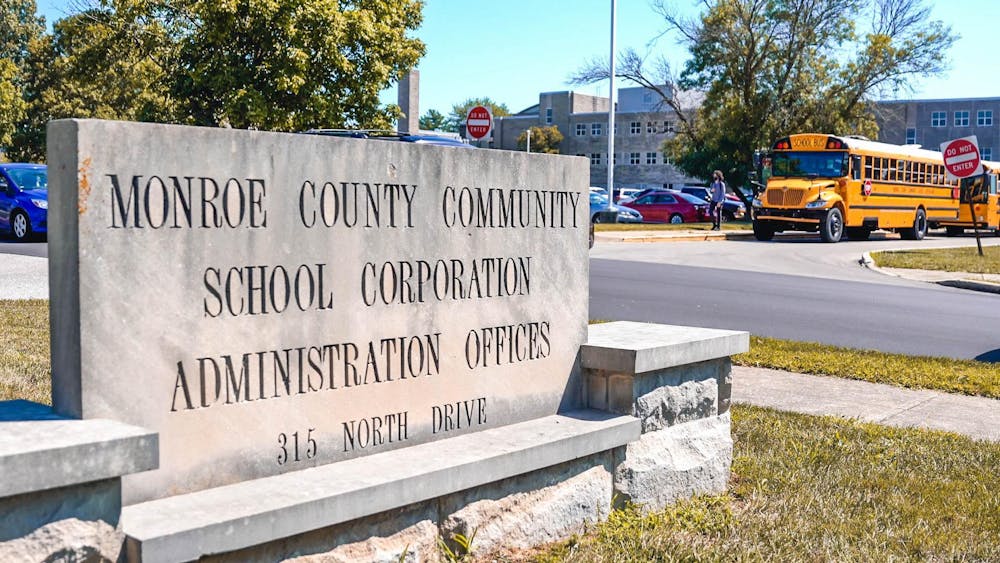Much of the IU campus is cluttered with cones and caution tape due to new building construction and renovations.
“We are ongoing, trying to make sure that we have the resources to renovate spaces that we need to but also care for them every day,” said Tom Morrison, vice president for capital planning and facilities. “It’s a beautiful campus. Everybody says it’s one of the best in the country, and we take great pride in that, and we want to maintain it.”
Construction projects include an apartment complex at Third and Union streets, which will open this fall, and renovations at Briscoe Quad and Tulip Tree Apartments.
Another residence hall at Rose Avenue will be complete in fall 2013, and there are also plans to renovate the Forest Residence Center dining hall.
Although new residence halls are being built, they will not add more dorm space to campus. Briscoe is being renovated to a suite-style complex and will have room for fewer students.
“The desire is to maintain the same number of residence hall spaces on the campus as we have had,” Morrison said.
Morrison said about one-third of IU students reside on campus. The goal is to update current spaces, some of which have not been upgraded since their original completion.
“We are putting in spaces that are much more in tune to what students are looking for today in terms of living accommodations,” he said. “That’s the effort that’s going on to upgrade our space to give students really what they’re looking for in newer and more improved spaces but not increase the capacity.”
Executive Director of Residential Programs and Services Patrick Conner said there won’t be new RPS workers for the Third and Union apartments, but new positions will be added when the Rose Avenue dorm opens in 2013.
“The Third and Union apartments will not see an increase in staff since it replaces the University West Apartment building that was razed for the new Jacobs School of Music Studio building,” Conner said. “The Rose Avenue Residence Hall, since it is an addition to our facilities, will result in new positions in residence hall management, custodial operations and resident assistants.”
Construction of the new Jacobs School building started about a year ago and is expected to finish in summer 2013. Renovations will answer a need for more practice space for students and faculty.
Hodge Hall, the Kelley School of Business Undergraduate Building, is also being expanded. The project will take about two years to complete. Morrison said construction costs have decreased during the last few years due to a downturn in the economy, but the price of some construction materials has been increasing.
He said there was a recent advantage in the cost of construction, but that advantage has somewhat disappeared because the economy is growing.
“It’s not as beneficial to be building as it was, say, two years ago, but it’s still a better position than it was relatively speaking than several years ago,” he said.
Morrison said the cost of construction materials is completely dependent on the cost of raw materials.
“A good amount of construction materials are sourced in items that are based in petroleum,” Morrison said. “So, as the price of oil goes up, just like the price of gas goes up, that influences the cost of materials.”
Morrison then said the price of steel is related to the global availability of steel and the global demand. If there is a lot of growth in China, that can influence the cost of steel here.
He also said when unemployment rates decrease, the cost of hiring workers increases.
According to minutes from the Board of Trustees’ meeting, the estimated cost of the Third and Union apartment complex was $16 million and was funded by RPS.
The cost of the Jacobs Studio Building was $44 million, and it was funded by a grant from the Lilly Endowment.
Morrison said construction molds the future of how the campus will look.
“Everything about how we place buildings is planned out for the next 30 years,” he said. “We look at buildings and look at their useful life, and if it’s more beneficial to tear them down and build new, we do that.”
He also mentioned that sometimes it is better to renovate, such as the case with Briscoe.
“The planning of our buildings is not haphazard,” Morrison said. “If we need to build a new building, we know generally where it’s going to be. We are very purposeful in how we site buildings, and we’re also very purposeful on how we design buildings to make sure it’s cohesive architecture on the campus. What you won’t see us do, necessarily, is build a red brick building on the campus. We have certain architectural standards we are trying to meet.”
IU renovates campus dorms
Get stories like this in your inbox
Subscribe





